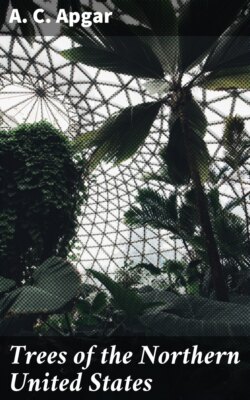Читать книгу Trees of the Northern United States - A. C. Apgar - Страница 6
На сайте Литреса книга снята с продажи.
Chapter I.
Roots.
ОглавлениеTable of Contents
Though but little study of the roots of trees is practicable, some knowledge of their forms, varieties, and parts is important.
The great office of the roots of all plants is the taking in of food from the soil. Thick or fleshy roots, such as the radish, are stocks of food prepared for the future growth of the plant, or for the production of flowers and fruit. The thick roots of trees are designed mainly for their secure fastening in the soil. The real mouths by which the food is taken in are the minute tips of the hair-like roots found over the surface of the smaller branches. As trees especially need a strong support, they all have either a tap-root—one large root extending from the lower end of the trunk deep down into the ground; or multiple roots—a number of large roots mainly extending outward from the base of the trunk.
Trees with large tap-roots are very hard to transplant, and cannot with safety be transferred after they have attained any real size. The Hickories and Oaks belong to this class.
Trees having multiple roots are readily transplanted, even when large. The Maples and Elms are of this class.
Roots that grow from the root-end of the embryo of the seed are called primary roots; those growing from slips or from stems anywhere are secondary roots.
Some trees grow luxuriantly with only secondary roots; such trees can readily be raised from stems placed in the ground. The Willows and Poplars are good examples of this group. Other trees need all the strength that primary roots can give them; these have to be raised from seed. Peach-trees are specially good examples, but practically most trees are best raised from seed.
A few trees can be easily raised from root-cuttings or from suckers which grow up from roots. The Ailanthus, or "Tree of Heaven," is best raised in this way. Of this tree there are three kinds, two of which have disagreeable odors when in bloom, but the other is nearly odorless. By using the roots or the suckers of the third kind, only those which would be pleasant to have in a neighborhood would be obtained. One of the large cities of the United States has in its streets thousands of the most displeasing of these varieties and but few of the right sort, all because the nurseryman who originally supplied the city used root-cuttings from the disagreeable kind.
If such trees were raised from the seed, only about one third would be desirable, and their character could be determined only when they had reached such a size as to produce fruit, when it would be too late to transplant them. Fruit-trees, when raised from the seed, have to be grafted with the desired variety in order to secure good fruit when they reach the bearing age.
